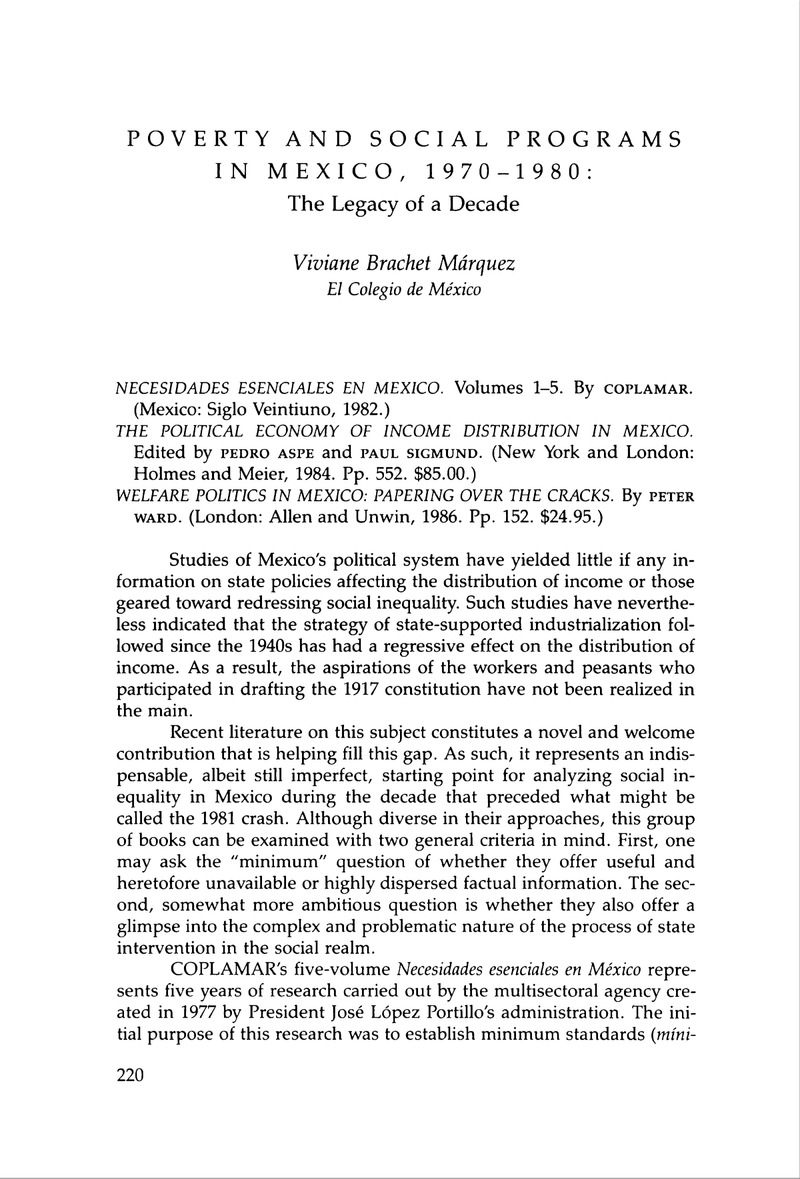Article contents
Poverty and Social Programs in Mexico, 1970–1980: The Legacy of a Decade
Review products
Published online by Cambridge University Press: 12 October 2022
Abstract

- Type
- Review Essays
- Information
- Copyright
- Copyright © 1988 by Latin American Research Review
References
Notes
1. According to the prognosis provided by the Consejo Nacional de Población (CONAPO), Mexico's population will gradually reach a 1 percent net rate of increase by the year 2000. Such an outcome should be considered problematic, however, given the fact that the reduction in birthrate achieved in Mexico since 1974 (when the new population law legalizing birth control was enacted) has resulted primarily from the dissemination of family planning services in the urban areas, which have traditionally been the most receptive and easiest to reach.
2. See T. Paul Schultz, “Demography and Development: New Directions in an Old Field.” Paper presented at the Symposium on the State of Development Economics, Progress and Perspectives, Yale University, 11–13 April 1986; and Michael B. Katz and Mark J. Stern, “History and the Limits of Population Policy,” Politics and Society 10, no. 2 (1980):225–45.
3. The International Conference on Primary Health Care convened in Alma Ata, USSR, in 1978 represents a landmark to the extent that it asserted this definition of health, as opposed to the conventional medical definition as the absence of disease.
4. Social Security in Mexico, which includes health as well as workman's compensation and pension benefits, is offered to private-sector employees by the Instituto Mexicano del Seguro Social (IMSS), to civil servants by the Instituto de Seguridad Social al Servicio de Los Trabajadores del Estado (ISSSTE), by Petróleos Mexicanos (PEMEX) to its employees, and by the armed forces to the military.
5. See “Salud para todos en el año 2000,” Estudios Sociológicos 3, nos. 5–6 (1985).
- 1
- Cited by




